Sensors for Engine Management
Sensing and forwarding information
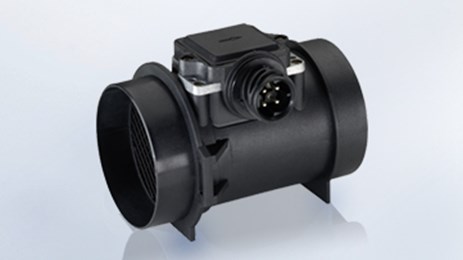
Mass airflow sensors supply information on temperature, humidity and intake air volume.
Sensors can help cut fuel consumption and harmful emissions. They play a part in boosting engine efficiency and vehicle safety to ensure greater driving comfort and enjoyment.
To fulfill the task of capturing and transmitting data, sensors need to be resistant to temperature, moisture, dirt and chemicals. They also need to function perfectly within electromagnetic fields and in the presence of other sensors, in addition to offering a long service life.
Mass Airflow Sensors
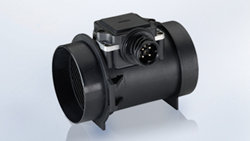 A growing focus on reducing CO2 emissions means that mass airflow sensors are becoming increasingly important in ensuring the optimum air fuel ratio.
A growing focus on reducing CO2 emissions means that mass airflow sensors are becoming increasingly important in ensuring the optimum air fuel ratio.
Mass airflow sensors are positioned directly after the air filter in the intake manifold and supply information on temperature, humidity and intake air volume. Despite their highly compact construction they feature precision technology to capture information, which – together with other engine data – enables optimum engine management.
This data includes:
- Intake air temperature
- Intake air humidity
- Intake air volume
In gasoline engines, mass airflow measurement is used in conjunction with other sensor readings to regulate the supply of fuel to the engine.
In diesel engines, mass airflow sensors are used to regulate the exhaust gas recirculation rate and calculate the maximum injection quantity.
Our mass airflow sensors are exceptionally reliable and highly capable of withstanding environmental factors. Their dynamic measurement ability makes an important contribution to reducing vehicle emissions.
To learn more about VDO Mass Airflow Sensors, contact:
Contact Sales Department
View our online catalog
Online Application Guide
Wheel Speed Sensors
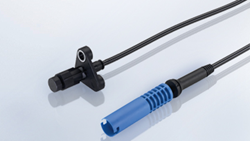 The wheel speed signal is crucial for electronic systems like ABS or ASC.
The wheel speed signal is crucial for electronic systems like ABS or ASC.
To learn more about VDO Wheel Speed Sensors, contact:
Contact Sales Department
View our online catalog
Online Application Guide
Camshaft Sensors
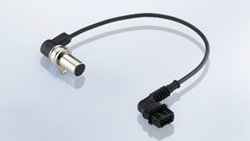 The camshaft sensor is located in the cylinder head and reads the camshaft sprocket to determine the position of the camshaft.
The camshaft sensor is located in the cylinder head and reads the camshaft sprocket to determine the position of the camshaft.
This information is required for functions such as initiating injection on sequential injection engines, the trigger signal for the magnet valve on pump valve injection systems and for cylinder-specific knock control.
To learn more about VDO Camshaft Sensors, contact:
Contact Sales Department
View our online catalog
Online Application Guide
Crankshaft Sensors
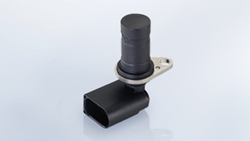 The crankshaft sensor supplies information on the crankshaft’s current position, which the engine management system can then use to calculate rpm. These values make it possible to determine the most economical fuel injection and ignition timing for a vehicle.
The crankshaft sensor supplies information on the crankshaft’s current position, which the engine management system can then use to calculate rpm. These values make it possible to determine the most economical fuel injection and ignition timing for a vehicle.
To learn more about VDO Crankshaft Sensors, contact:
Contact Sales Department
View our online catalog
Online Application Guide
Knock Sensors
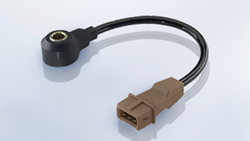 Modern engines which allow high compression ratios have a distinct disadvantage: their design leads to increased knocking, which can damage the engine.
Modern engines which allow high compression ratios have a distinct disadvantage: their design leads to increased knocking, which can damage the engine.
Knock sensors reliably measure the vibration of the engine block that is characteristic of engine knocking. This allows the firing angle and other parameters to be set such that the engine continues to function correctly close to the knock threshold. This not only protects the engine but also reduces fuel consumption.
To ensure maximum precision, our knock sensors deploy groundbreaking bandwidth technology.
To learn more about VDO Knock Sensors, contact:
Contact Sales Department
View our online catalog
Online Application Guide
Pressure Sensors
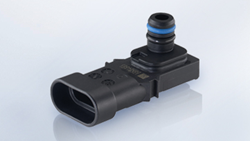 MAP and T-MAP sensors measure the air pressure in the intake manifold behind the throttle valve to determine air intake. This information is extremely important for calculating the amount of fuel to be injected to ensure the correct air fuel mix. For this reason, the dynamic measurement capability of these engine management components is crucial in reducing vehicle emissions.
MAP and T-MAP sensors measure the air pressure in the intake manifold behind the throttle valve to determine air intake. This information is extremely important for calculating the amount of fuel to be injected to ensure the correct air fuel mix. For this reason, the dynamic measurement capability of these engine management components is crucial in reducing vehicle emissions.
- MAP pressure sensor for turbocharged engines for measuring air pressure behind the turbocharger (measurement range 500–3000 hPa)
- T-MAP pressure sensor with integrated temperature sensor
To learn more about VDO Pressure Sensors, contact:
Contact Sales Department
View our online catalog
Online Application Guide








